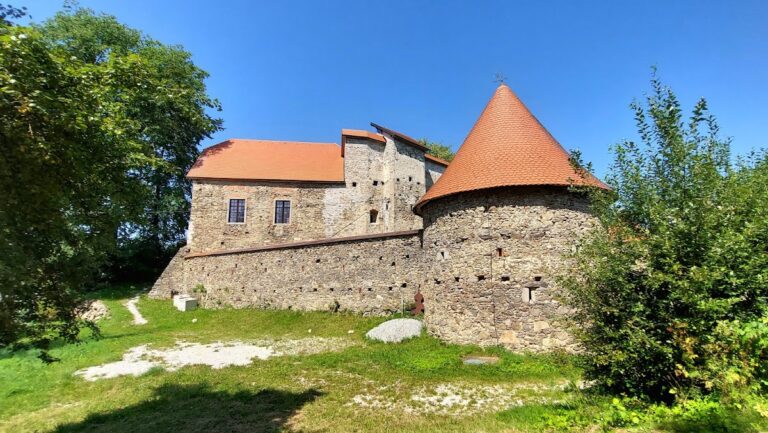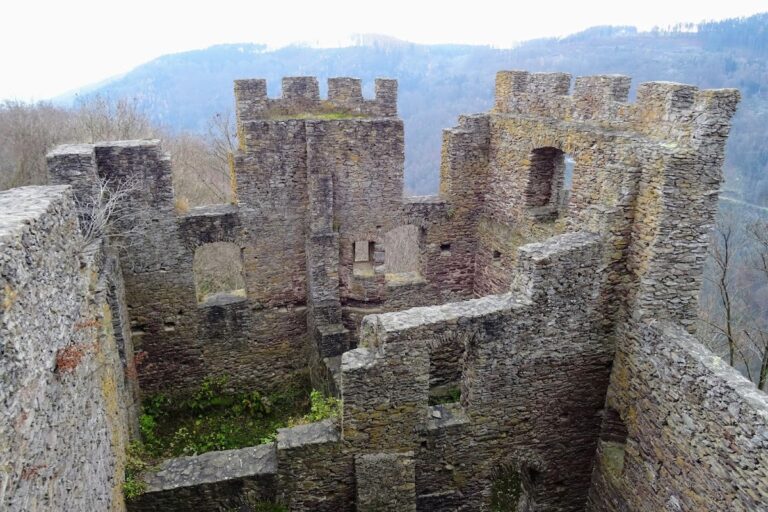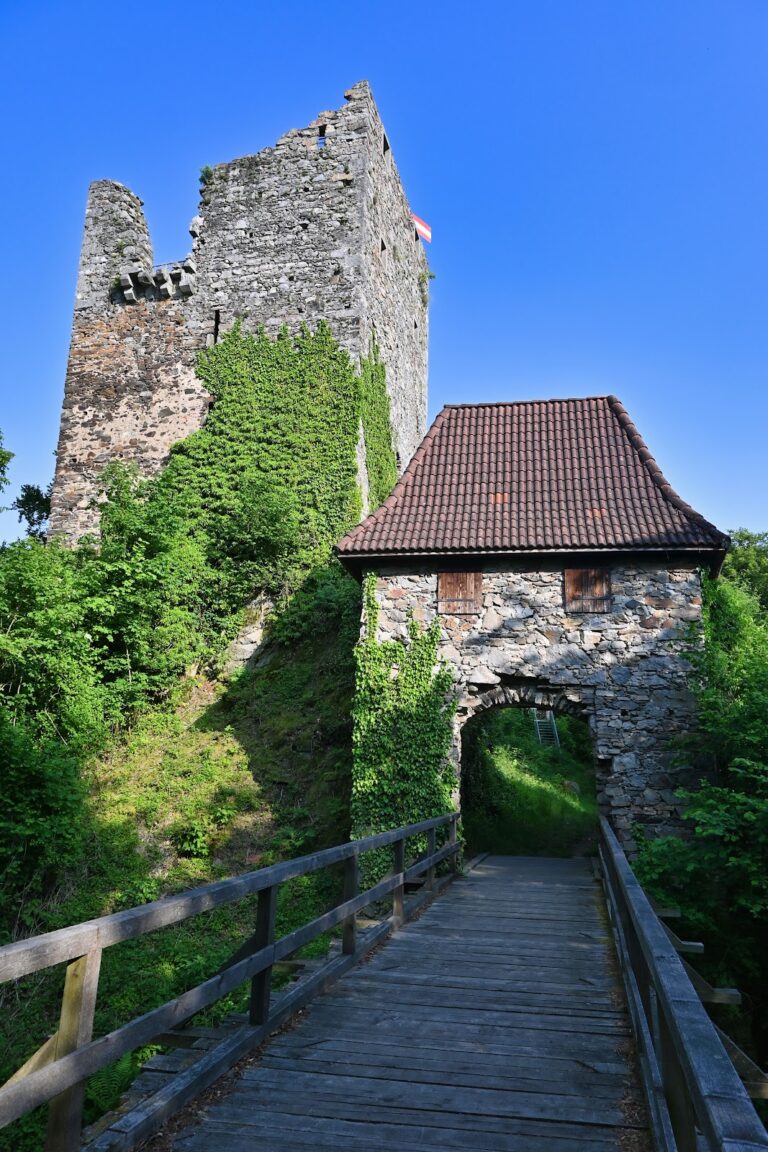Waxenberg Castle: A Medieval Fortress in Austria
Visitor Information
Google Rating: 4.7
Popularity: Low
Google Maps: View on Google Maps
Country: Austria
Civilization: Unclassified
Remains: Military
History
Waxenberg Castle stands above the village of Waxenberg in Austria and was originally built by medieval settlers in the early 12th century. The first castle, established in 1140 by Ulrich and Cholo von Wilhering, occupied a site about three and a half kilometers south of the present ruins, a location now known as Rotenfels or Alt-Waxenberg. This early hilltop fortress served as the initial seat of power before its abandonment near the end of the 13th century.
Around 1291, the old castle at Rotenfels was deserted, and the current site overlooking Waxenberg village was developed in the years leading up to 1300. At this new location, Waxenberg Castle became a fief under the Habsburg dynasty, with Heinrich I. von Wallsee recorded as its earliest known lord around the year 1300. Under the Wallsee family’s authority, the district court of Waxenberg was elevated to the status of a county by 1306, establishing it as one of the central Mühlviertel region’s oldest and most significant judicial territories.
Throughout the late Middle Ages, the castle changed hands several times, reflecting the shifting political landscape of the region. In 1435, the estate was purchased by the Schallenberg brothers. By 1463, Heinrich von Liechtenstein held the fief, followed by Michael von Traun in 1492. Ownership continued to pass through various noble families, including Wolfgang Jörger zu Tollet in 1504 and Nikolaus Rabenhaupt von Suche in 1523. In 1533, the estate was pledged to Erasmus and Wilhelm von Gera, indicating the complex financial arrangements among the nobility.
During the late 16th century, Waxenberg Castle was recognized for its defensive capabilities. Around 1594, as the Ottoman Empire posed a threat to the region, the castle provided a refuge and was fortified accordingly to withstand potential attacks. A significant change came in 1614, when Christoph von Gera acquired the lordship outright, purchasing it as free property for about 330,000 gulden, a considerable sum at the time.
The early 17th century brought turmoil during the Upper Austrian Peasants’ War in 1626. The castle was seized, plundered, and severely damaged by revolting peasants. After their eventual defeat, these peasants were compelled to carry out repairs on the stronghold they had damaged. Later, between 1639 and 1644, the castle and its accompanying lordship were bought by Konrad Balthasar von Starhemberg. The Starhemberg family has maintained ownership ever since.
By the mid-18th century, the lordship governed a population of 745 subjects. In 1756, a lightning strike caused severe damage to the castle, leading to its abandonment. Following this event, the Starhembergs relocated to the nearby Waxenberg Palace, a residence likely constructed during the 17th century and situated about 200 meters from the ruined fortress. Since the 1950s, efforts to preserve and restore the castle ruins have been led by the Waxenberg Cultural Association, culminating in renovations completed in 2013.
Remains
The remains of Waxenberg Castle occupy a raised site above the village and consist of a main courtyard and surrounding defensive structures. The castle’s main enclosure covered an area of roughly 885 square meters, while an adjacent outer courtyard or bailey expanded the fortified complex over an additional 1,260 square meters. The walls, built primarily of local stone, illustrate the medieval construction techniques adapted for defense and residence.
A standout feature of the ruins is the tall, round bergfried, a type of central tower used mainly for refuge and defense rather than habitation. Dating from the 15th century, this bergfried rises approximately 30 meters with a diameter of 10 meters and walls measuring 3 meters thick. Its robust design includes four internal floors topped by a battlement platform. The tower remains accessible and climbable today, offering a clear impression of its original height and form. Notably, the 1756 lightning strike that damaged the castle left the bergfried largely intact, allowing this structure to survive as the most prominent element of the ruins.
Beneath the outer bailey toward the direction of the Waxenberg Palace stands a battery tower, dating from the 16th century. This smaller tower features a square base and originally was covered by a pyramidal or tent-like roof, although the roof is now gone and the tower is open above. The tower’s design includes broad windows meant for defense, reflecting its role in artillery use or surveillance during periods of heightened military tension.
Close to the castle ruins is the Berghäusel, also referred to as the Jägerhäusel, a building constructed in the 16th or 17th century that incorporates elements from the late Middle Ages. This structure has a hipped gable roof, two rooms with decorative cross-rib vaults—a stone ceiling design characteristic of Gothic architecture—and a traditional black kitchen, an older style of hearth used for cooking. Some of the window stone frames in the Berghäusel are spolia, meaning they were repurposed from original castle masonry, linking this building closely to the castle’s historic fabric.
In the village below the castle, the site once housed the castle tavern, an establishment where visitors and residents might have gathered historically. Today, this location corresponds to the current Land- und Seminarhotel Atzmüller. Together, these features provide a layered picture of Waxenberg Castle’s historical presence, from its military core to the supporting buildings connected with daily life and lordship administration.










